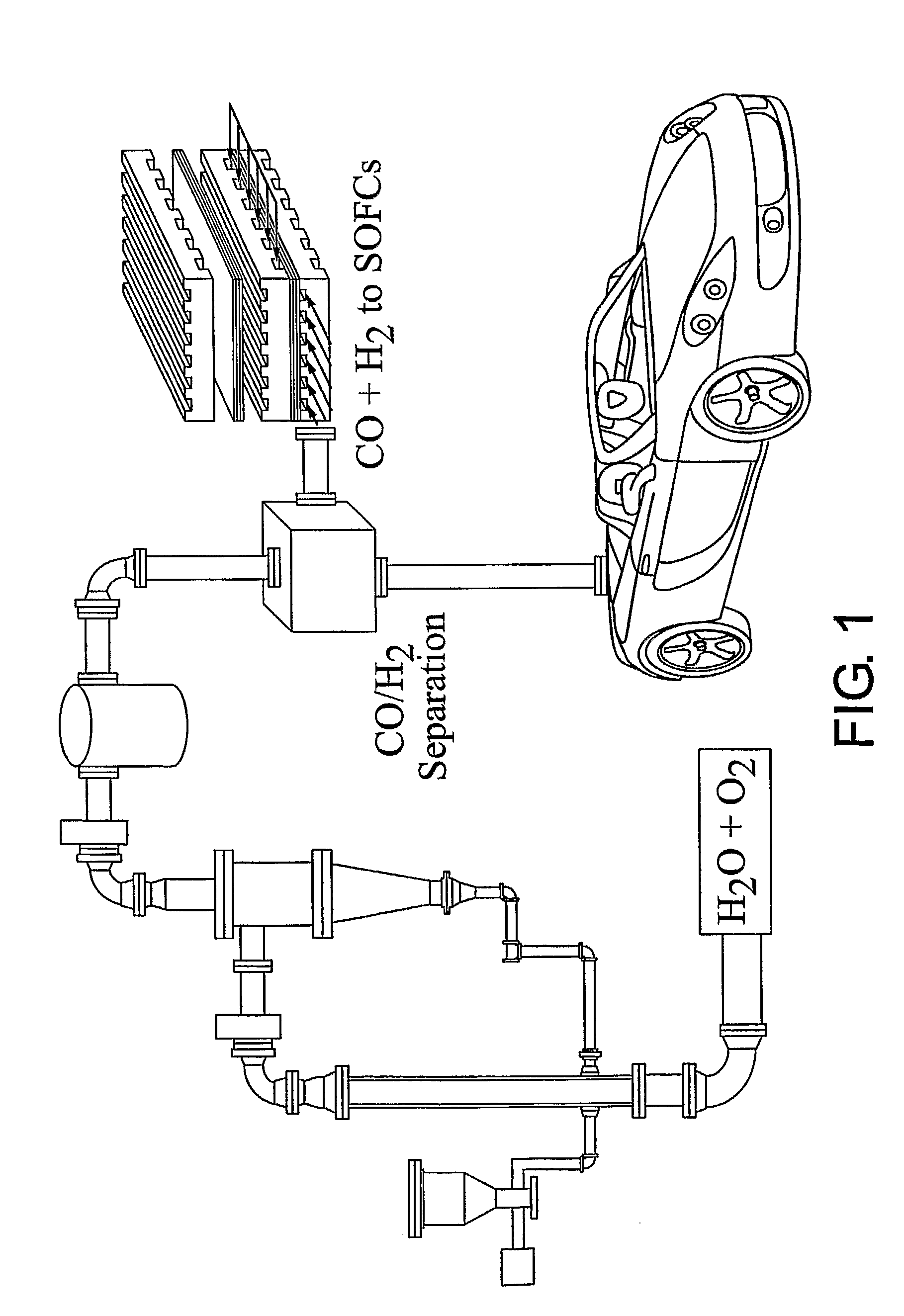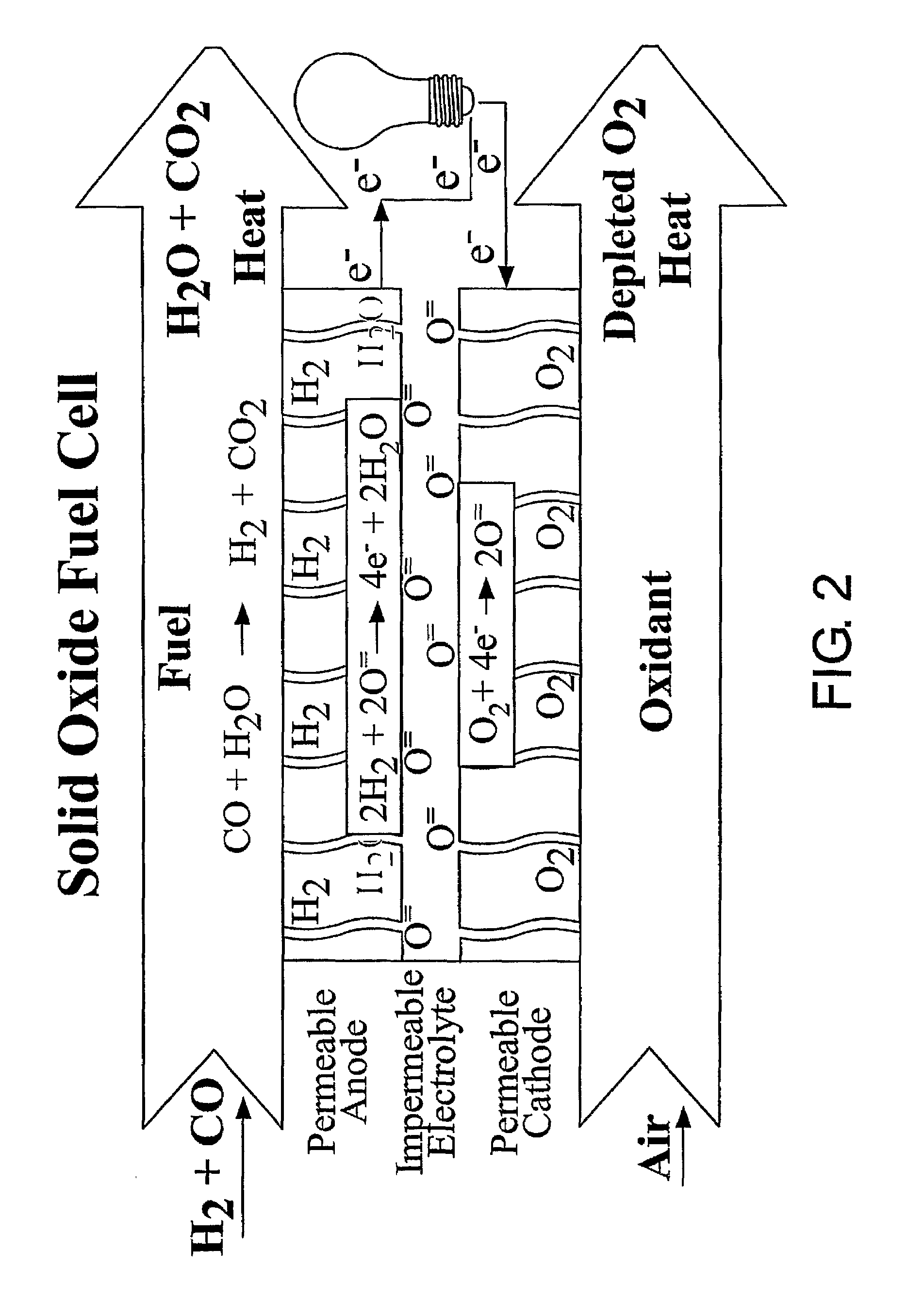Sulphur-Tolerant Anode For Solid Oxide Fuel Cell
a fuel cell and solid oxide technology, applied in cell components, transportation hydrogen technology, electrochemical generators, etc., can solve the problems of reducing the power production of the psofc until, degrading the performance of the anode of the psofc beyond acceptable limits, and achieving high current density, efficient oxidation of hydrogen, and long service li
- Summary
- Abstract
- Description
- Claims
- Application Information
AI Technical Summary
Benefits of technology
Problems solved by technology
Method used
Image
Examples
Embodiment Construction
[0035]A schematic illustration of one embodiment of the invention is shown in FIG. 5. FIG. 5 shows a three-layer PSOFC anode where A is the sulfur-tolerant layer, B is the optimized H2 oxidation layer, C is a thin layer of Yttria Stabilized Zirconia that promotes ionic conduction, D is a reference electrode, and E is the electrolyte. The electrolytes of the PSOFCs used in the research can be made of scandia stabilized zirconia (SSZ) or YSZ.
[0036]In FIG. 6, a two layer preferred embodiment is shown in which A is the sulfur-tolerant layer, B is the optimized H2 oxidation layer, D is a reference electrode, and E is the electrolyte. The outer layer A is exposed to a flow of a fluid, which can be a liquid or a gas, such as a stream of gasified coal (syngas) containing a sulfur compound, such as H2S. The inner layer B preferably is not exposed directly to the fluid flow path, but all chemicals in the fluid preferably have to diffuse through the layer A to come into contact with the layer ...
PUM
| Property | Measurement | Unit |
|---|---|---|
| weight percent | aaaaa | aaaaa |
| weight percent | aaaaa | aaaaa |
| thick | aaaaa | aaaaa |
Abstract
Description
Claims
Application Information
 Login to View More
Login to View More - R&D
- Intellectual Property
- Life Sciences
- Materials
- Tech Scout
- Unparalleled Data Quality
- Higher Quality Content
- 60% Fewer Hallucinations
Browse by: Latest US Patents, China's latest patents, Technical Efficacy Thesaurus, Application Domain, Technology Topic, Popular Technical Reports.
© 2025 PatSnap. All rights reserved.Legal|Privacy policy|Modern Slavery Act Transparency Statement|Sitemap|About US| Contact US: help@patsnap.com



